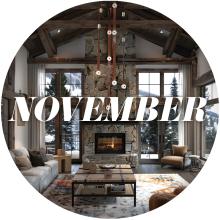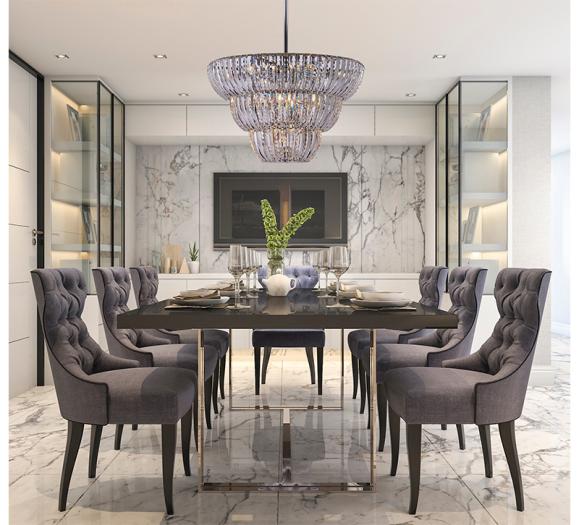The ubiquitous phrase “Everything old is new again” has been linked to everything from song lyrics and literary genres to art movements, fashion and political discourse. Nowhere, though, is this idea more relevant than in interior decor, where niche styles from years gone by are enjoying a major resurgence.
Nostalgic, no-nonsense styles such as Memphis and Pop Art and even Bauhaus—all of which had limited appeals in their original incarnations—are set to have a big impact on the 2023 interior design landscape. Seen as art for art’s sake or super minimalist (or both), these styles were relevant for very short time periods—and even had questionable sales success in their respective times. That said, home decor professionals should consider why these styles are making a retail comeback as well as how to creatively incorporate these throwback trends into a modern, of-the-moment lifestyle. Read on for a look at these niche design trends that are contributing to today’s design aesthetic.
Making a Statement with the Memphis Movement
What could possibly be more fun than a combination of art deco opulence and the aesthetic of 1950s kitsch and mass-produced pop art objects? That’s the allure of the Memphis Design movement, which started in the 1980s by a group of Italian architects and designers known collectively as the Memphis Milano group. The iconic aesthetic—born from the group’s common dislike of the simplicity of modernism with its embrace of modern lines, ho-hum shapes and neutral palettes—is currently making a comeback in contemporary residential spaces. In contrast to the modernist tradition, the Memphis Design movement breaks all the rules. It is characterized by loud, bold patterns, abstract designs, clashing colors, rounded edges, stripes and squiggles, and of course, plastic laminate furnishings in a range of hues. While polarizing, Memphis Design has found its way into everything from home accessories and lighting, to textiles, furniture and architecture, in ways that were unexpected, playful and rule-breaking.
Pop Art’s Bold, Colorful, Accessible Allure
Pop Art, made famous in the 1950s by the likes of Andy Warhol, Roy Lichtenstein and James Rosenquist, is arguably one of the most recognizable styles of modern art, accessible to every level of society. Blurring the lines between “high” and “low” culture, this acutely identifiable style is easily defined by its celebration of commonplace, everyday objects (think Warhol’s soup cans) elevated to the level of fine art. The Pop Art style eschews tradition and instead heralds the contemporary world’s embrace of mass manufactured products and images. In interior home design, the Pop Art influence is an enduring trend that offers something for everyone, combining familiarity with a dynamic energy that has stood the test of time.

The Contemporary, Functional and Bright style of Bauhaus
A unique blend of fine art, arts and crafts, and architecture, the Bauhaus movement, started by German architect Walter Gropius, has had a unique influence on a clean, contemporary design aesthetic since its beginnings more than a century ago. Known for its inherent philosophy of marrying form and function, Bauhaus epitomizes a less-is-more modern style, and is the embodiment of good taste and sophistication where art is functional. Accessible to all who appreciate the beauty in simplicity, the Bauhaus style is perhaps one of the most timeless treasures of the design world, celebrating a blend of industrial, rugged raw materials, geometric shapes and bright, bold pops of color. Its current revival underscores a collective need to move past the insular philosophy of the past few years, landing squarely in a place of bold vision, individualism, flair and optimism—something many in the post-pandemic world crave and need.
For designers interested in furnishings and lighting products that meet the moment, visit www.varaluz.com.







